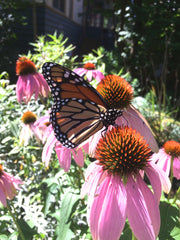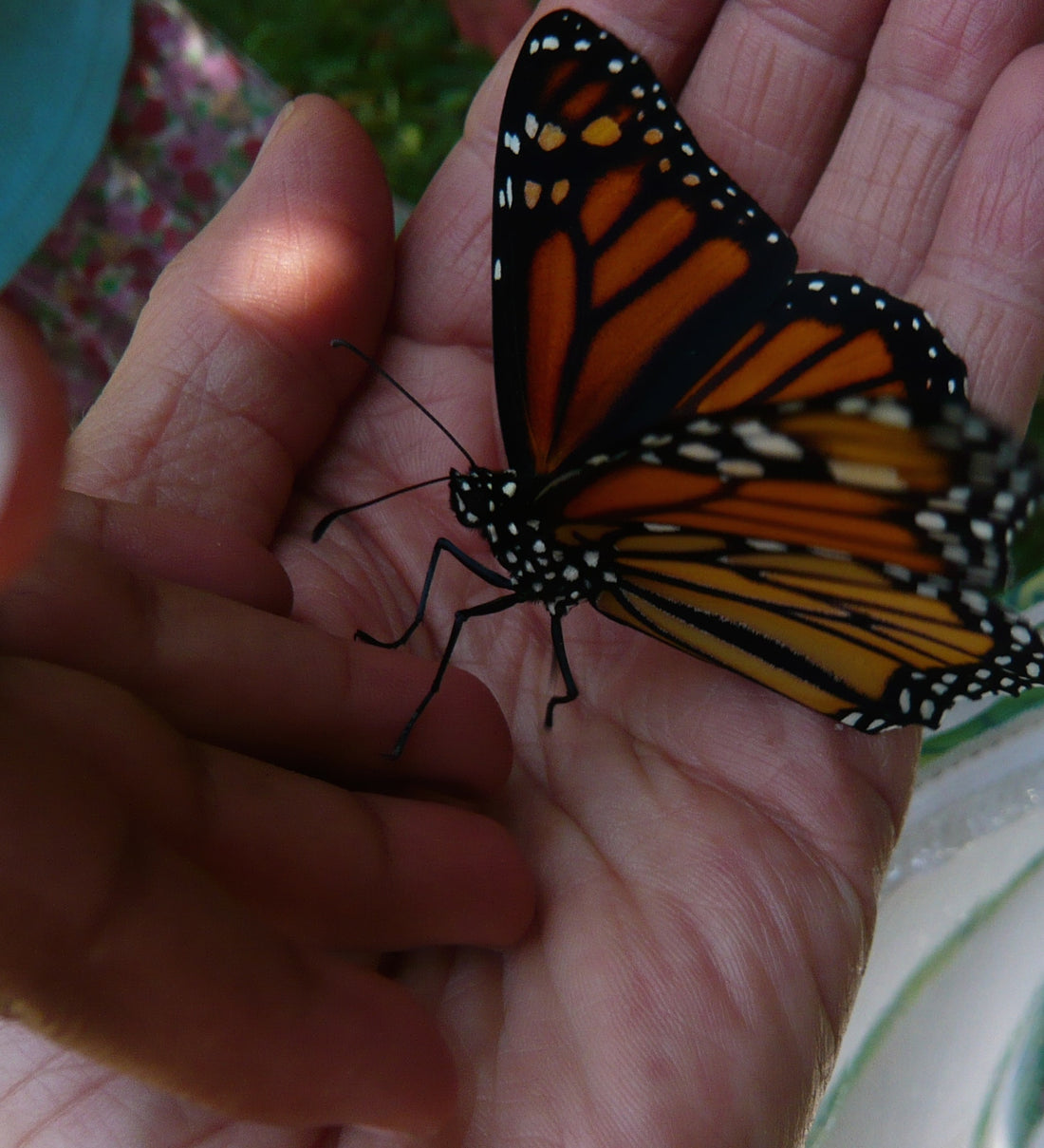by Stephanie Walquist
Many people want to pitch in and do their part to make sure that future generations of people can experience the wonder of Monarchs and all they represent as well as benefit from future scientific discoveries that are connected with these particular butterflies and all of the other aspects of our ecosystems.
Here is a list which we hope will be helpful. We are listing plants that we have available for our plant sale, but Wild Ones has an extensive list in its Wild for Monarchs Brochure.

Milkweeds
Milkweeds are the absolute musts for a Monarch garden. Without these plants, there are NO Monarchs. Plants in the Asclepias genus are the only ones that Monarch caterpillars have evolved to eat. They cannot eat any other type of plant (e.g. they can't eat vinca, Rose of Sharon, Coneflowers, etc). Only milkweed.
- Butterflyweed
- Rose (or Swamp) Milkweed
- Common Milkweed
Early Nectar Plants
We are considering plants that bloom in June, which is about the earliest time you might expect to see Monarchs. Some flowering shrubs at this time are very helpful. It is a hard time in native gardens, but there are some plants blooming at this time.
- Blue-eyed Grass
- Ohio Horsemint
- Pale Coneflower (very important one to have)
- Prairie Coreopsis
- Wild Blue Phlox
- Wild Columbine
Summer Nectar
This part of the season is pretty easy. The milkweed blooms are also beloved by Monarchs, so if you have those planted they will receive visitations from Monarchs for nectar and for egg-laying.
- Downy Sunflower
- Marsh Blazing Star
- Michigan Lily
- Milkweeds
- Purple Coneflower (very important plant to have)
- Rattlesnake Master
- Rough Blazing Star
- Wild Bergamot
Fall Nectar
One of the most important things outside of planting milkweed we can do is to ensure plentiful fall nectar sources for Monarchs. They need fuel not only to fly thousands of miles but also to gain fat in order to survive hibernating in the oyamil firs in Mexico. This migratory generation is not reproductive until after their winter diapause.
- Aromatic Aster
- Ironweed
- Joe Pyeweed
- New England Aster (a favorite!)
- Showy Goldenrod
- Stiff Goldenrod
With the addition of some of these plants as well as others that we don't carry, all of our gardens collectively can help to make a positive and substantial impact on the Monarch population.


5 comments
My favorite non native nectar flower is long stem verbena.It has a very modest bloom but attracts the most species of butterflies in my garden,also bees love it and also the finches.It blooms until 2nd/3rd frost and reseeds its self,I’ve used it in my butterfly garden for 25 years.
Note that Monarch mamas prefer the small tender leaves of the milkweed plants, so you are more likely to get eggs on newly sprouted plants or the top leaves of existing ones. You need a lot of them together since a hungry caterpillar can eat all the leaves off a small plant in a few days! (but that is how it’s supposed to be). And yes, nectar sources for the adults are vital, in addition to milkweed for the caterpillars, and as you saw, they will use non-native annuals as well.
Oh, and how could I forget Purple Coneflower, Rattlesnake Master, Joe Pye Weed! They love those.
Monarchs love Tithonia, or Mexican Sunflower. Many of us who also use a lot of native plants will include that in our gardens. It’s particularly popular during migrating season when most gardens do not have much blooming. Milkweeds are usually not blooming then. What other native plants do you have for nectar during migrating season? I always have Monarchs on my milkweeds for nectar as well as for their caterpillars. You haven’t had any caterpillars? I also have Blue Mist, Goldenrods, New England Aster, Pasture Thistle, Liatris, and I always have Monarchs on those in late summer and fall.
I planted 3 different milkweed plants around 8 years ago, butterfly weed etc. Seldom a Monarch. Last year I planted thithonia and I had Monarchs, sometime 3 at a time over a period of 2-3 months. They preferred them to all other natives etc.